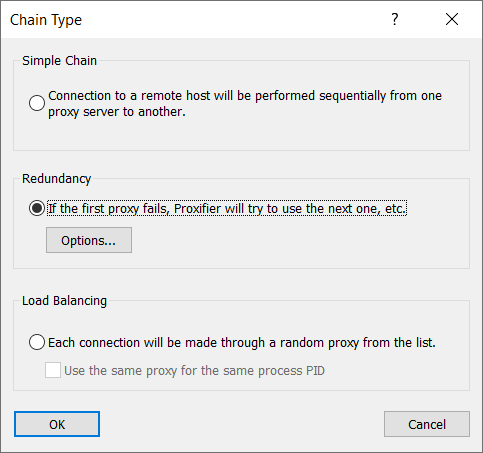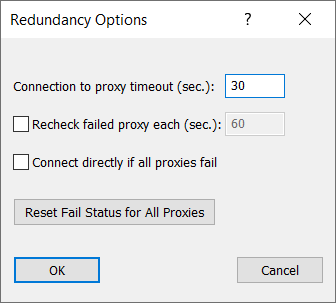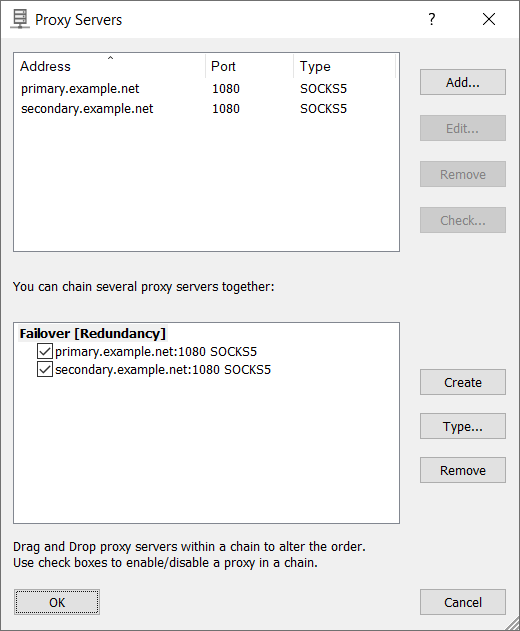Redundancy can be useful when you need to ensure proxy server failover or load balancing.
To enable this feature, you must create a proxy chain and set the chain type to or .

If the first proxy in such a chain fails, Proxifier will mark it as failed and try the next one. The entire process is completely transparent for the client application. Proxifier can try several proxies without losing the initial connection request from the application.
The button allows users to configure the failover options.

You can set the in seconds and cause Proxifier to .
If the timeout is excessive, client applications can consider that the target host is down and can close the connection before Proxifier tries the next proxy. If the timeout is too short, Proxifier can mistakenly detect proxy failure.
You can set Proxifier to recheck failed proxies in the background after a given amount of time using the option.
Failed proxy servers are marked as [failed] in the proxy list. The failure status is not saved when Proxifier restarts. Choose to make Proxifier try to connect the proxies again.
A redundancy proxy chain is illustrated below.

You can use the checkboxes to enable/disable particular proxies in the chain. This option has nothing to do with the failure status. If a proxy is unchecked, Proxifier simply ignores it. Additionally, a checked proxy can be marked as [failed] and ignored.
Proxifier gives users detailed messages on the status of the process.
Here is a typical session in a failover scenario.
[02.01 11:18:37] iexplore.exe (2972) - proxifier.com:80 matching Default rule : using Failover proxy chain
[02.01 11:18:46] (Redundancy Chain) Failover - Could not connect to proxy primary.example.net:1080 - connection timeout (10 sec)
[02.01 11:18:46] (Redundancy Chain) Failover - New active proxy is backup.example.net:1080
[02.01 11:18:46] (Redundancy Chain) Failover - Trying next proxy.
[02.01 11:18:47] iexplore.exe (2972) - proxifier.com:80 open through Failover proxy chain
When the chain type is , Proxifier makes each connection through a random proxy in the chain. You can check to ensure that the same proxy server is used for all the connections initiated by the same process (same Process ID). Thus, the proxy remains static within the process.